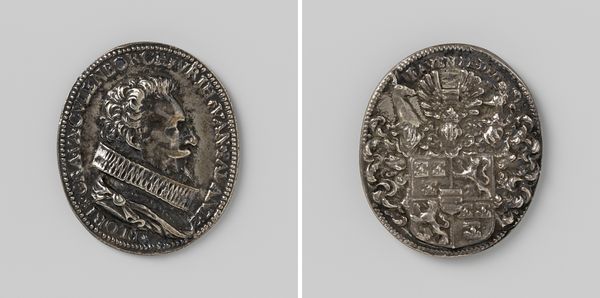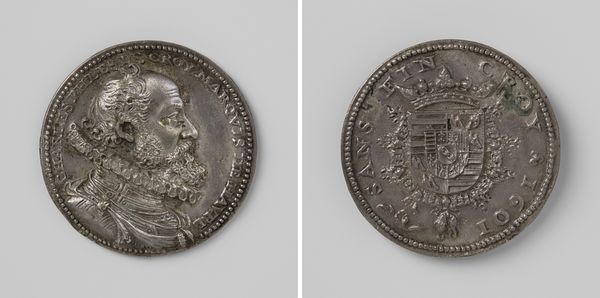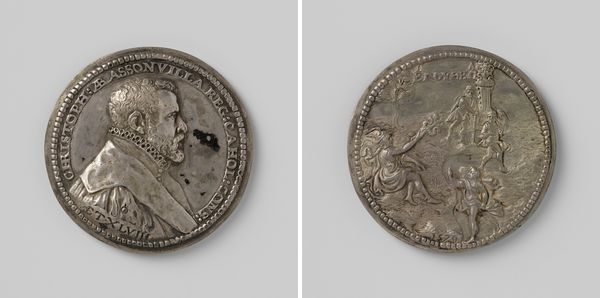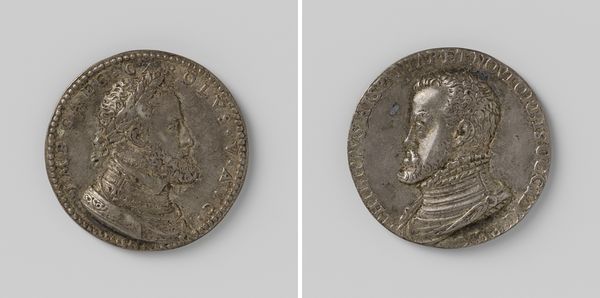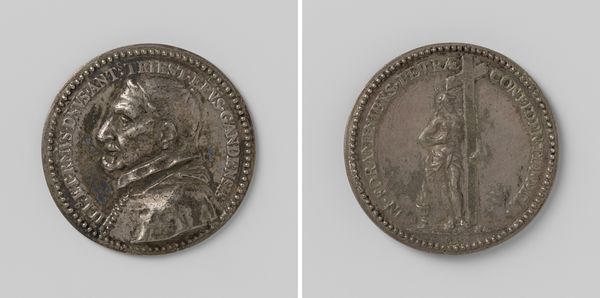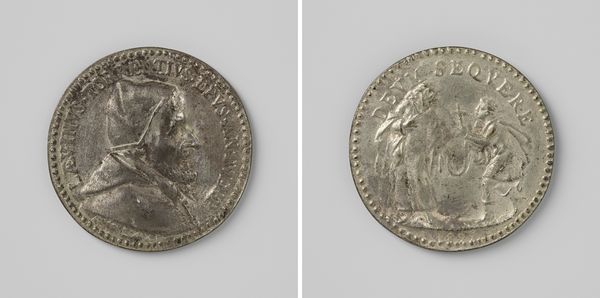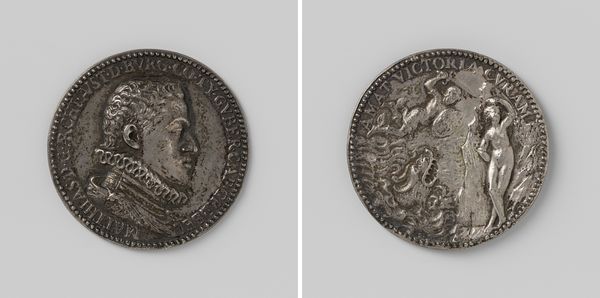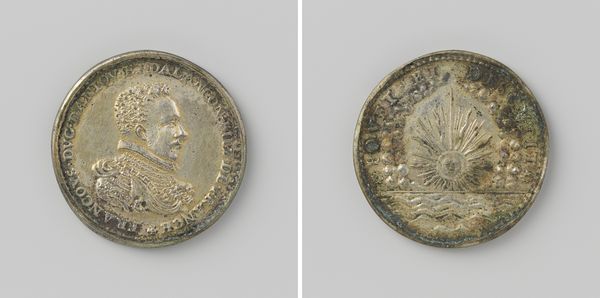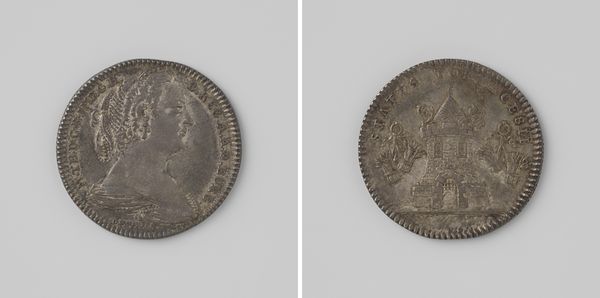
silver, metal, sculpture
#
portrait
#
silver
#
metal
#
sculpture
#
11_renaissance
#
sculpture
#
history-painting
Dimensions: diameter 4.3 cm, weight 30.64 gr
Copyright: Rijks Museum: Open Domain
Editor: This silver medal, “George baron van Freundsberg en de Spaanse furie te Antwerpen,” made by Jacques Jonghelinck in 1576, feels so distant. The level of detail achieved on such a small scale is really impressive. How can we even begin to interpret a piece like this today? Curator: We must understand these objects not just as aesthetic creations, but as active participants in the social and political landscape of their time. Medals like these were essentially propaganda tools. Editor: Propaganda? In what sense? Curator: In the sense that they presented a very specific narrative, designed to influence public opinion. This medal depicts both George Freundsberg, a military leader, and the Sack of Antwerp. How do you think it uses these images together to achieve a certain effect? Editor: Well, knowing nothing about the figures, my gut reaction is... one side has the stern-looking portrait, and the other side shows something like a battle scene or maybe a city in chaos. Is this meant to connect this figure to victory or power amidst conflict? Curator: Precisely! The medal commemorates the events surrounding the Spanish Fury, but also aims to shape its memory. By depicting Freundsberg with such gravitas alongside a scene of conflict, the medal could be attempting to assign blame, or perhaps even justify actions taken during the sack. Editor: So the medal's purpose isn’t necessarily about historical accuracy but about promoting a specific point of view. What does that tell us about who commissioned it? Curator: Exactly. Medals like these are invaluable historical documents, reflecting the complex relationship between art, power, and public memory. Studying them gives insight into the forces that shape how history is remembered. Editor: I never would have considered that something like this could hold so much political weight. It changes how I see not only this object, but how art functions within society. Curator: Indeed. And that is where the true power of historical study resides: in illuminating the layers of meaning embedded within the artifacts of the past.
Comments
No comments
Be the first to comment and join the conversation on the ultimate creative platform.
